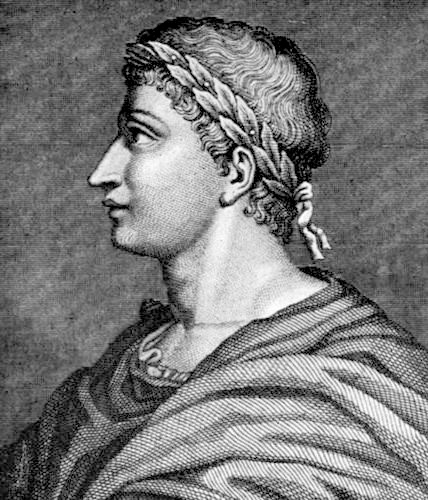Is it a verse, is it a poem? No! It’s an elegiac couplet!
Surprising as it might sound today, long before elegy attained its almost exclusive modern association with death, the word first and foremost described a kind of poetry: ‘the elegiac metre’. The poets of ancient Greece and Rome employed this verse form for songs accompanied by a wind instrument (the two-piped aulos). The topic most often on the minds of these singers wasn’t death but love. To quote the OED again: ‘elegiac metre was used for poetry to express personal sentiments on a range of subjects, including epigrams, laments, sympotic poetry, and (in Rome) love poetry.’
What was this ‘elegiac metre’ exactly?
Also known as the elegiac couplet, it combines one line of hexameter (6 feet) and another of pentameter (five feet). Hexameter was the line traditionally used for epic poems telling epic stories like Homer’s Iliad or Virgil’s Aeneid. The shorter, lyrical pentameter was better suited to personal and emotional subjects, including grief and love, but also family, nature, travel and war. The resulting rhythmic effect is often represented like this:
– uu | – uu | – uu | – uu | – uu | – x
–uu | – uu| – || – uu | – uu | –
What this meant in poetic reality was a rising and falling effect that was described by the Roman poet Ovid in his own elegiac Amores:

I burn, and Love rules my vacant heart.
My work rises in six beats, sinks in five:
farewell hard fighting with your measure!
Muse, garland your golden brow with Venus’s myrtle
culled from the shore, and sing on with eleven feet!
Ovid’s rise and sink was perfectly suited to pathos – to strong passions that remained unfulfilled, to unrequited love and also to grief, above all of those who died young or before their time.
As suggested above, the elegiac form was made in Greece. Of the few examples that have survived, we can see the mixture of light and shade in this foundational fragment by Mimnermus:
‘And when dolorous Age cometh, that maketh a man both foul without and evil within, till cares do wear and wear his heart, he hath no more the joy of looking one the sunlight, to children he is hateful, to women contemptible, so grievous hath God made Age.’
But the elegy would be properly developed and perfected in Rome – by poets including Theocritus, Tibullus, Propertius and Ovid, all of whom developed its potential
for expressing yearning, eroticism and even humour, all tied up with a carpe diem bow:
But nor does this mean there aren’t elegies that would slot neatly into our definitions of the modern elegy as a song of mourning: